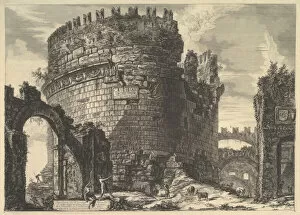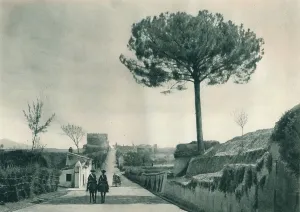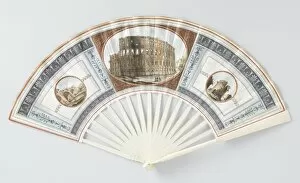Cecilia Metella Collection
"Cecilia Metella: A Journey Through Time and Ruins" Step into the fascinating world of Cecilia Metella, a woman whose legacy has left an indelible mark on history
All Professionally Made to Order for Quick Shipping
"Cecilia Metella: A Journey Through Time and Ruins" Step into the fascinating world of Cecilia Metella, a woman whose legacy has left an indelible mark on history. From ancient ruins to artistic renderings, her name echoes through time. In Robert MacPherson's "Untitled (Ruin of a Round Fortress Building), " we catch a glimpse of the grandeur that once surrounded Cecilia Metella's tomb. The black chalk and pen drawing from 1669 showcases the intricate details of this magnificent structure. As we explore further, a demonstration panel reveals the technique used to raise travertine in constructing monuments like Cecilia Metella's tomb. This method speaks volumes about the craftsmanship and dedication put into creating such architectural marvels. Vedute di Roma presents us with another perspective on Cecilia Metella's tomb in Plate 20: "Tomb of Caecilia Metella called the Capo di Bove. " Created around 1762, this artwork immortalizes her final resting place amidst Rome's captivating landscape. An unknown artist captures the essence of Rome in the 1850s with their depiction of Cecilia Metella's tomb. The sepia-toned photograph transports us back in time, allowing us to envision what it must have been like during her era. The Via Appia, also known as the Appian Way, leads us towards Cecilia Metella's tomb. Eugen Poppel beautifully portrays this iconic road in his painting from 1927, inviting us to follow its path and discover more about our enigmatic protagonist. Engravings from Sketches of Rome take us on a visual journey through various landmarks including Via Appia Antica Tomb Cecilia Metella by Ernst Fries. These detailed sketches offer glimpses into everyday life surrounding these historical sites. Returning to travertine techniques, another demonstration panel sheds light on how these stones were raised for construction purposes.













